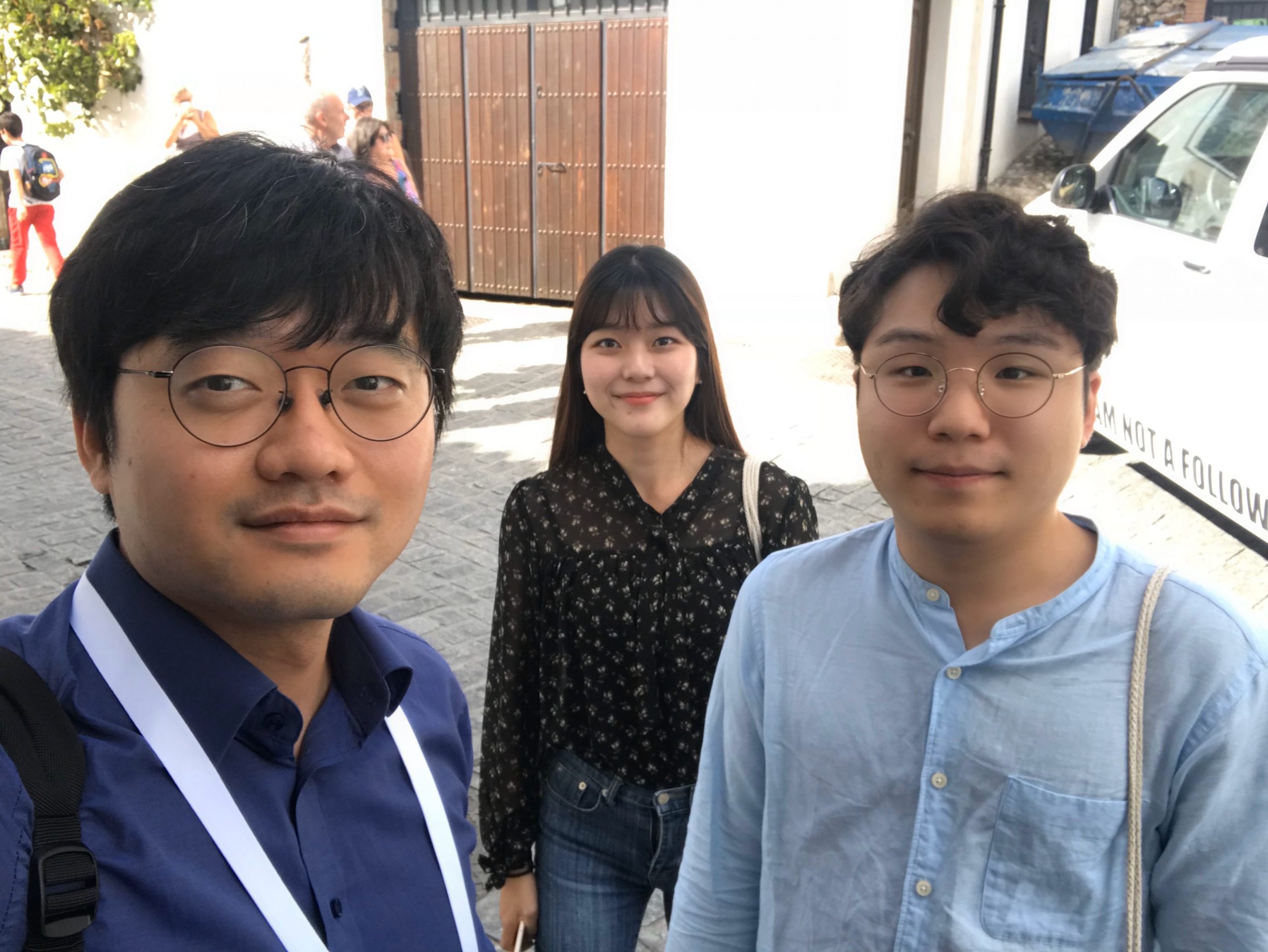By Mathieu Boudreau

April’s MRM Highlights Pick interview is with Jieun Lee and Jongho Lee, researchers at Seoul National University in South Korea. Their paper is entitled “Artificial neural network for myelin water imaging”, and it presents a deep learning approach aimed at generating quantitative myelin water imaging maps. This work demonstrated exemplary reproducible research practices: not only did the authors share the code related to their work, but they also shared their trained deep learning networks.
MRMH: To start off with, could you tell us a little bit about yourselves and your background?
Jieun: I’m currently a master’s candidate at Seoul National University and my background is in electrical and computer engineering. My research has focused on myelin imaging and applying deep learning in the field of medical imaging.

Jongho: I’m an MR physicist by training, with experience in developing pulse sequences and reconstruction algorithms. My interest in machine learning research started in the last few years, and was prompted by the fact that many of my students were really excited about the potential of applying machine learning for medical imaging purposes. The nice thing with deep learning is that you can use it at the level of research, such as using the neural network as a black box to fit different models and see how it compares with well-established data processing algorithms. The use of neural networks in the MR physics field is still in an early stage, and this research by Jieun is one example of applying a neural network to replace traditional data processing.
MRMH: Could you give us an overview of your paper?
Jieun: What we proposed in this paper is to apply deep learning to generate quantitative myelin water imaging maps from T2 acquisition data. Multi-echo spin-echo data were used to estimate myelin water fraction. We explored three different artificial neural networks to produce myelin water fraction, and each one showed highly accurate results compared with data fitted conventionally. The deep learning method we proposed is interesting because of its computational efficiency; when using the deep learning algorithm, networks take less than a second to process. This reduces the processing time by a factor of 10,000 when compared with the conventional fitting method. We examined both healthy control and multiple sclerosis patients in this study, so it has shown great potential for myelin water imaging applications.
Jongho: Conventional data processing can take several hours, and you really don’t know whether your acquisition is of good quality until after the subject has left. If the patient moved during the scan, you have lost the chance to redo it. Part of the motivation for this work was to find a way of speeding up the data processing to real-time levels, so that we can generate the images right after the scan.
MRMH: Jieun, do you have any advice for new graduate students who would like to incorporate deep learning into their project?
Jieun: A really helpful thing for me in the beginning was looking at code and datasets that others had shared. I learned a lot by exploring other people’s work. It helped me gain a deeper understanding of deep learning, and find tricks on how to improve the performance of the artificial neural network.
Jongho: I think that’s a really good point for early stage researchers. In deep learning, there are so many variables that you can control, such as the artificial neural network architectures, the depth of the neurons, or the size of the networks. There are no golden rules to follow for this technology that will point you in the right direction, it’s a very exploratory process. But when it works, it really works well and it’s very exciting when it gives you the right result. However, it can take weeks or months of challenges before you are successful.

MRMH: It seems like you’ve benefited a lot from people sharing their code. From your perspective, how can sharing code and data along with papers help reproducible research?
Jongho: I feel like we have entered a different research era in terms of reproducibility. Before, we used to write a paper and people could reproduce the experiments by following the steps as described. This has changed for deep learning research. We cannot reproduce the results without a trained network or data because the performance of a network depends not only on network architecture, but also on training data. With no data or trained network, it is difficult to compare one’s results with those of others. I believe sharing is becoming a common practice for research.
MRMH: Was that your motivation to share your code and trained models?
Jieun: We hope that by sharing our code, it will make our work more reproducible. Another benefit is that it also opens the door to constructive criticism that we can benefit from. When I initially presented this work at ISMRM, someone asked me for the code and I was able to quickly share the GitHub link. He then gave me some feedback on my code that I later incorporated.
MRMH: What do you enjoy doing when you’re not in the lab?
Jieun: On vacation, I definitely love to go on a trip. After work, I like to relax by doing pilates and hanging out with my friends, but unfortunately those options are out at present, due to the current coronavirus epidemic. Hopefully the situation will get better soon and I will be able to socialize with my friends in person again.
Jongho: I really enjoy traveling, so that’s out too at the moment! I was very excited at the prospect of visiting Sydney again, but that opportunity now seems to have gone. Hopefully we will recover from all these challenging events soon, and get to see people not just online but in person at events like ISMRM.




